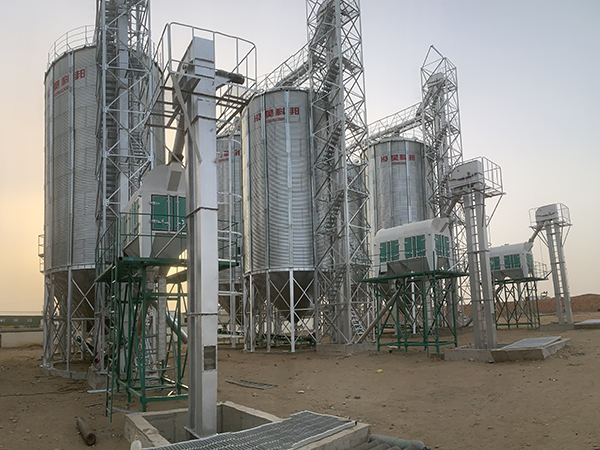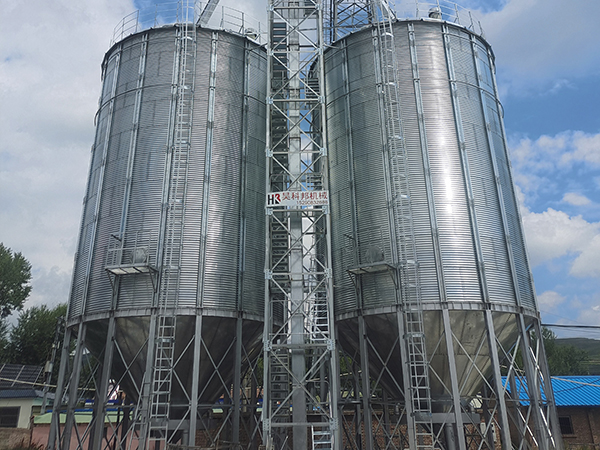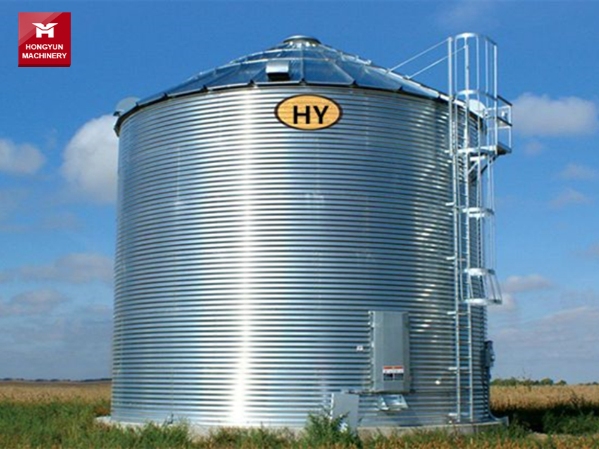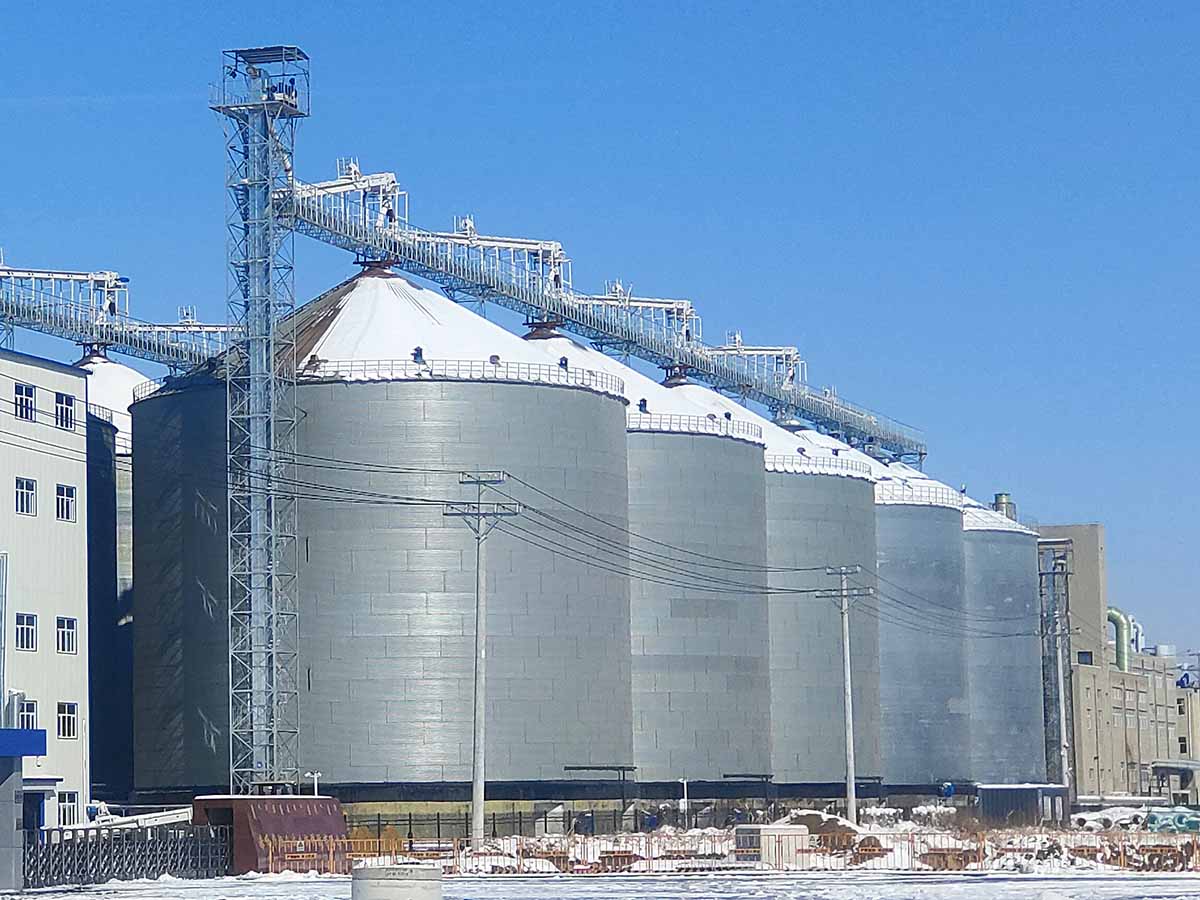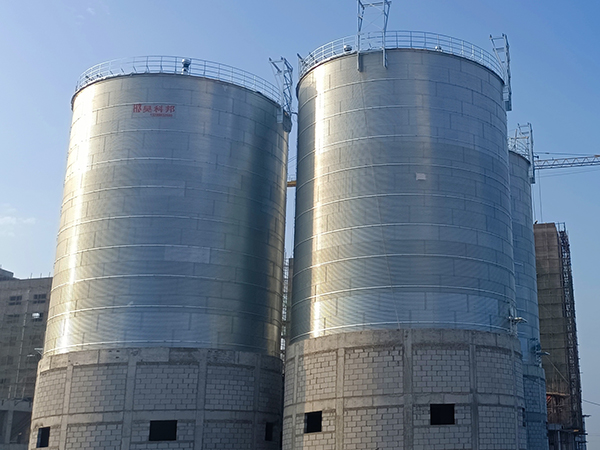Grain bin
A Grain bin warehouse is a structure or facility used for storing grains. It is typically a closed structure designed to store cereals such as wheat
Grain bin Introduction
A Grain bin warehouse is a structure or facility used for storing grains. It is typically a closed structure designed to store cereals such as wheat, corn, rice, etc. The design of a Grain bin warehouse typically takes into account aspects such as ventilation, humidity control, pest prevention, and management. These facilities are aimed at ensuring the freshness and safety of grains during storage. The size of grain warehouses can vary depending on the need, ranging from small-scale farm granaries to large commercial grain silos. They play a vital role in agriculture production and the grain supply chain, providing essential infrastructure for the storage and protection of grains.
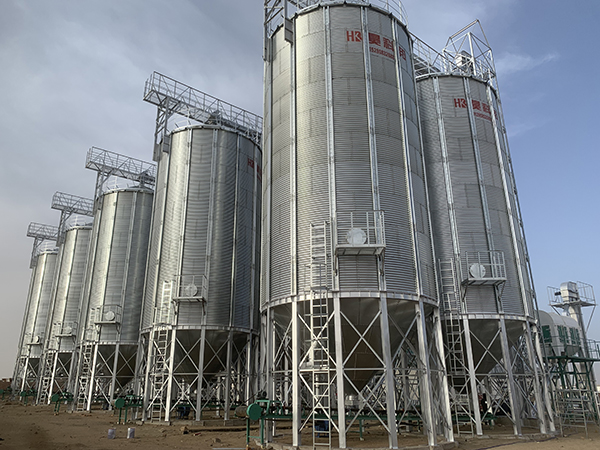
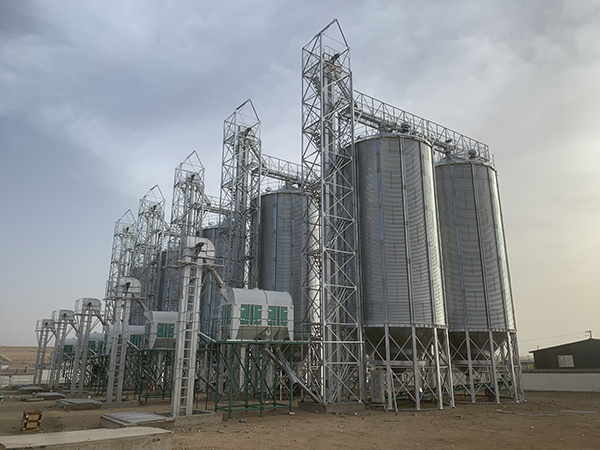
Features of Grain bin
Storage Function
Grain bin warehouses are primarily used for storing grains such as wheat, corn, rice, etc., to maintain their freshness and quality.
Protective Nature
Designed as enclosed structures, Grain bin warehouses effectively shield grains from external environmental factors such as moisture, pests, sunlight, etc.
Ventilation Control
Grain bin warehouses are typically equipped with ventilation equipment to ensure air circulation, preventing grain dampness and mold.
Humidity Management
Measures for humidity control may be implemented in grain warehouses to maintain appropriate humidity levels during storage.
Pest Prevention
Various pest control measures, such as the use of insecticides or sealing devices, may be employed to prevent insect infestation and damage to stored grains.
Convenient Management
Internal design of Grain bin warehouses facilitates convenient and efficient management, inspection, cleaning, and distribution of grains.
Diverse Sizes
Grain bin warehouses come in diverse sizes and designs, ranging from small-scale farm granaries to large commercial silos, catering to different needs.
Safety
Structural integrity and material selection of grain warehouses ensure the safe storage of grains, reducing the risk of fires and other accidents.
Cost-effectiveness
By effectively protecting and managing grains, Grain bin warehouses can reduce losses and waste, thereby saving costs and improving economic efficiency.
Overall, Grain bin warehouses play a crucial role in the grain industry by providing essential infrastructure for the storage, protection, and management of grains.
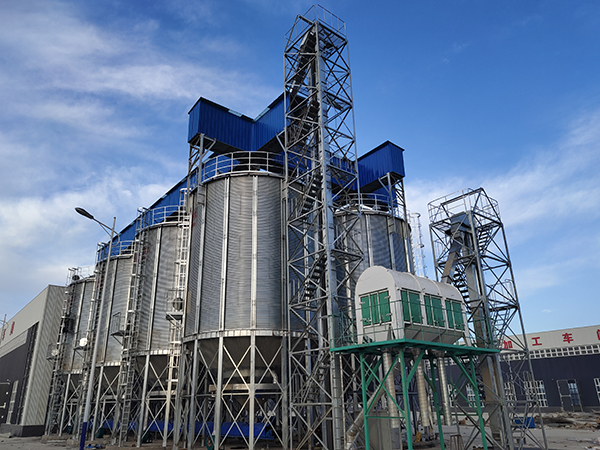
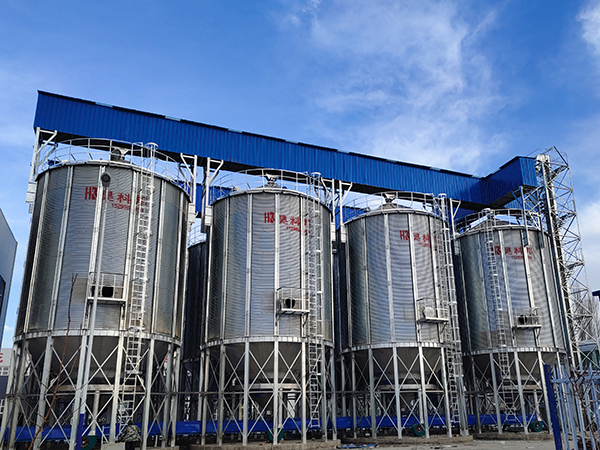
The structure of the Grain bin
Wall
The wall forms the main enclosing structure of the Grain bin warehouse, usually constructed of materials such as reinforced concrete, prestressed concrete, or steel. It has sufficient strength and rigidity to withstand the weight of stored grains and external environmental loads. The interior may undergo moisture-proof and mold-proof treatments, such as applying moisture-proof coatings or laying moisture-proof layers.
Roof
The roof covers the top of the warehouse, serving to protect against rain, sunlight, and provide insulation. Made of the same material as the wall, it is designed to facilitate drainage, ventilation, and lighting needs, and may include facilities such as skylights and vents.
Floor
The bottom is designed to prevent moisture, insects, and facilitate the discharge of grains. It may use moisture-proof materials or have a moisture-proof layer. For large grain warehouses, the bottom may be designed with a sloping cone shape to facilitate the self-flow of grains.
In-Out Grain System
This includes the intake and discharge ports. The intake port is located at the top or side of the warehouse, equipped with grain stoppers, dust covers, and other facilities to ensure that grains do not spill or contaminate during loading. The discharge port is located at the bottom or side of the warehouse, equipped with gates, chutes, conveyors, and other equipment for the quick and orderly discharge of grains from the warehouse.
Cleaning Equipment
This includes vibrating screens, magnetic separators, air classifiers, etc., used for the initial cleaning of stored grains, removing impurities and foreign objects to ensure grain quality.
Support System
This includes pillars, beams, and connectors, used to support and stabilize the main structure of the silo.
Ventilation System
This includes ventilation ports, ventilation ducts, and ventilation equipment, used to maintain air circulation inside the silo, preventing grains from molding or spoiling.
Sealing System
This is used to ensure the sealing performance of the Grain bin, preventing external moisture and harmful substances from entering the silo interior. It typically includes doors, windows, sealing gaskets, and other components.
Unloading Equipment
This is used to facilitate the removal of stored grains from the silo interior. This may include unloading ports, conveyors, and unloading valves, among other components.
Safety Equipment
This is used to ensure safety during the use of the Grain bin, such as fire-fighting equipment, emergency stop devices, etc.
Additional Accessories
These include ladders, platforms, lighting equipment, etc., used for the convenience of silo management and maintenance.
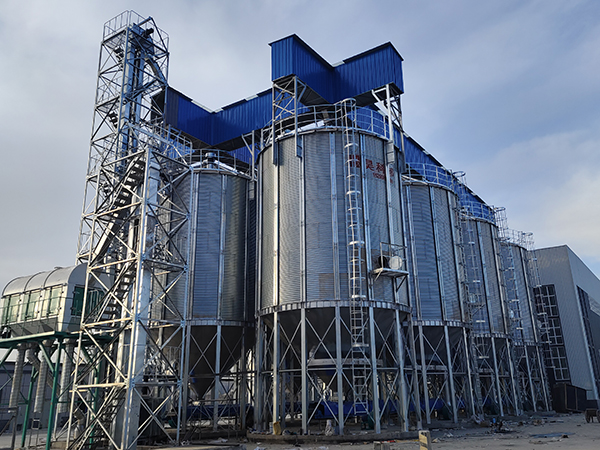
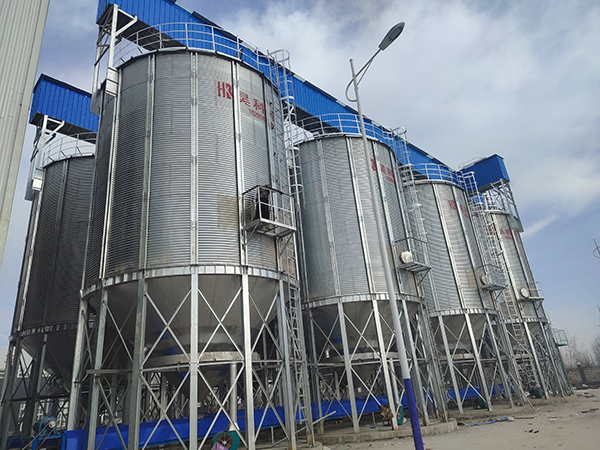
Advantages of Grain bin
Storage Capacity
Grain bin warehouses offer ample storage space for grains, allowing for bulk storage and inventory management.
Preservation of Quality
By providing a controlled environment, grain warehouses help preserve the quality of grains by protecting them from moisture, pests, and other external factors that can lead to spoilage.
Extended Shelf Life
Stored grains in warehouses typically have a longer shelf life compared to grains stored in open-air environments, reducing the risk of spoilage and waste.
Market Stability
Grain bin warehouses contribute to market stability by providing a buffer against fluctuations in supply and demand. They allow for the storage of surplus grains during times of abundance and release them during times of scarcity, helping to stabilize prices.
Logistical Efficiency
Grain bin warehouses facilitate efficient logistics by allowing grains to be stored near production areas or transportation hubs, reducing transportation costs and ensuring timely delivery to markets.
Risk Management
Grain bin warehouses help farmers and traders mitigate risks associated with weather, market volatility, and other uncertainties by providing a secure storage option for their crops.
Value Addition
Grain bin warehouses can add value to grains by providing facilities for cleaning, drying, and processing, allowing for the production of higher-quality products.
Financial Benefits
Grain bin stored in warehouses can be used as collateral for loans or as a hedge against price fluctuations, providing financial benefits to farmers and traders.
Overall, Grain bin warehouses play a vital role in the agricultural supply chain by providing essential infrastructure for the storage, preservation, and distribution of grains, thereby benefiting farmers, traders, consumers, and the economy as a whole.
Application scope of Grain bin
Coban Silo is widely used for grain storage such as wheat, corn, soybean, paddy, rice, soybean meal, barley, malt, sunflower seeds, rapeseed, peanuts, flour, and other powder materials, oat, special Silo, and seeds, etc.

Grain bin technical parameters
Scientifically speaking, the Silo capacity should be measured with volume (m3). Even in the same grain Silo, the storage tons will be different for different grains with different densities. The following table is calculated based on a Silo density of 0.75kg/m3, and surely HKB customizes Silo systems unique for you.
| Most Popular Hopper Bottom Steel Silo Technical Specifications | ||||||||
| Capacity | 50Ton | 100Ton | 150Ton | 200Ton | 300Ton | 500Ton | 1000Ton | 1500Ton |
| Model | TCZK
03605 |
TCZK
04507 |
TCZK
05507 |
TCZK
06406 |
TCZK
07307 |
TCZK
07313 |
TCZK
11010 |
TCZK
12811 |
| Diameter(m) | 3.667 | 4.584 | 5.500 | 6.417 | 7.334 | 7.334 | 11.000 | 12.834 |
| Total Height(m) | 9.56 | 12.53 | 13.25 | 12.85 | 14.70 | 21.42 | 20.95 | 23.51 |
| Volume(m³)
Density:0.75ton/m³ |
69 | 150 | 222 | 273 | 415 | 699 | 1346 | 2039 |
| Most Popular Flat Bottom Steel Silo Technical Specifications | ||||||||
| Capacity | 1000Ton | 1500Ton | 2000Ton | 2500Ton | 3000Ton | 5000Ton | 8000Ton | 10000Ton |
| Model | TCK
10014 |
TCK
11915 |
TCK
13715 |
TCK
15514 |
TCK
15518 |
TCK
18321 |
TCK
24718 |
TCK
25621 |
| Diameter(m) | 10.084 | 11.918 | 13.750 | 15.584 | 15.584 | 18.334 | 24.751 | 25.668 |
| Total Height(m) | 18.69 | 20.34 | 20.87 | 20.30 | 24.78 | 28.60 | 26.99 | 30.60 |
| Volume(m³)
Density: 0.75ton/m³ |
1335 | 2009 | 2701 | 2467 | 4145 | 6693 | 10879 | 13484 |
After-sale Service
- – HKB provides advanced grain safety storage technology to assure your grain silo 100% quality stability.
- – grain silo Quality guarantee is one year after installation and commissioning or 18 months after leaving China Port. Maturity is the first.
- – 7 days x 24 hours service, within 24 hours reply/solve of any technical issues upon request.
- – Routinely telephone track to remove all might be problems grain silo or issues guarantying the whole system grain silo long-lasting safety and reliability.
- – HKB will consider all other needs like customs clearance, sea delivery, insurance, customs tax benefit plan, documentation, etc. So our respected Users feel so relaxed and easy to get the grain silo system well.

